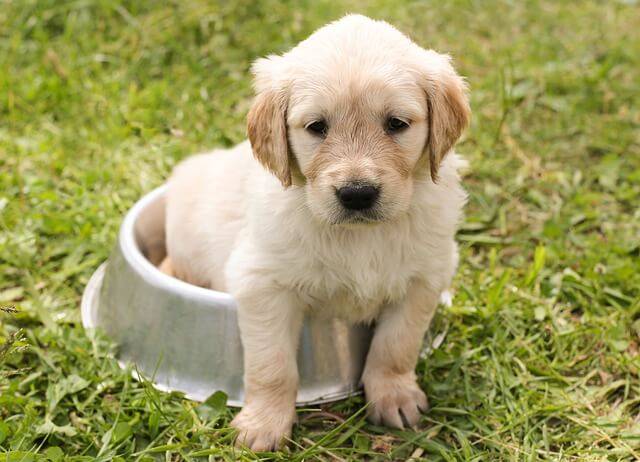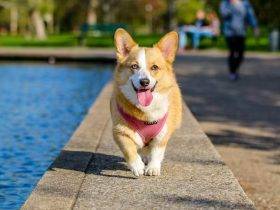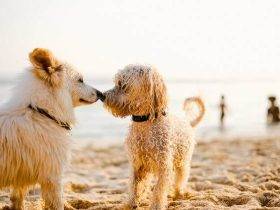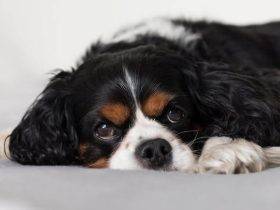Welcoming a new puppy into your home is a joyous occasion, filled with moments of excitement and anticipation. However, along with the joy comes the responsibility of potty training, a crucial aspect of raising a well-mannered and happy canine companion. Successfully potty training your puppy sets the foundation for good behavior and a harmonious household. In this comprehensive guide, we will walk you through the process of potty training your puppy, step by step. From understanding your puppy’s cues to establishing a consistent routine, you’ll gain valuable insights to navigate this essential phase of puppyhood.
the Importance of Puppy Potty Training
Puppy potty training is not just about maintaining a clean living environment; it’s about fostering a positive relationship between you and your puppy. Effective potty training prevents accidents, minimizes frustration, and ensures your pup understands the rules of the house.
Setting the Stage for Success
- Preparing Your Home
- Creating a designated potty area
- Puppy-proofing the living space to prevent accidents
- Gathering Necessary Supplies
- Puppy pads or outdoor-friendly surfaces
- Cleaning products for accidents
Understanding Your Puppy’s Schedule
- Recognizing Potty Cues
- Sniffing, circling, whining, or restlessness
- Taking your puppy out after waking up, eating, and playing
- Establishing a Routine
- Consistent feeding times and portion control
- Regular outdoor potty breaks
Positive Reinforcement and Training Techniques
- Using Positive Reinforcement
- Praising and rewarding successful potty trips
- Offering treats, verbal praise, and petting
- Crate Training for Potty Success
- Using a crate as a tool for training and confinement
- Gradually increasing crate time and outdoor breaks
Addressing Challenges and Common Issues in Puppy Potty Training
Puppy potty training, while rewarding, can also come with its fair share of challenges and hiccups. Accidents are a natural part of the learning process, and understanding how to deal with them effectively is crucial for a successful training journey. Additionally, nighttime potty training poses its own unique set of considerations. Let’s delve into how to address these common issues and set your puppy up for success.
Dealing with Accidents: Reacting Calmly and Avoiding Punishment
Accidents are to be expected during the potty training phase, and it’s essential to react with patience and understanding. Avoiding punishment is crucial, as scolding your puppy for accidents can lead to confusion, fear, and hinder the learning process. Instead, focus on positive reinforcement and redirection.
Thoroughly Cleaning Accident Spots to Eliminate Odors
One of the most critical steps in managing accidents is thorough cleaning. Puppies have a keen sense of smell, and if residual odors linger, your pup may be drawn to those spots again. To eliminate odors, use enzymatic cleaners specifically designed for pet accidents. These cleaners break down the organic compounds in urine and feces, ensuring your puppy doesn’t associate those areas with a potty spot.
Nighttime Potty Training: Adjusting Feeding and Water Intake
Nighttime potty training involves managing your puppy’s bathroom needs while they sleep. One effective strategy is to adjust your puppy’s feeding and water intake before bedtime. Offer dinner a few hours before sleep and limit water intake in the evening. This helps reduce the likelihood of middle-of-the-night potty breaks.
Setting an Alarm to Take Your Puppy Out During the Night
Setting an alarm to take your puppy out during the night can be a game-changer. Puppies have smaller bladders and may need to relieve themselves during the night, especially in the early stages of potty training. Depending on your puppy’s age, set an alarm for a specific time interval. Gradually, as your puppy’s bladder capacity improves, you can extend the time between nighttime potty breaks.
Creating a Nighttime Routine for Success
Establishing a consistent nighttime routine aids in nighttime potty training. Before settling your puppy down for the night, take them outside for a final potty break. This routine signals to your puppy that nighttime is for sleeping, not pottying. Providing a comfortable and safe sleeping environment, such as a crate, can also contribute to a smoother nighttime routine.
Puppy Potty Training Troubleshooting Tips
- Stay Patient: Potty training requires patience and consistency. Accidents will happen, but maintaining a calm and patient attitude will encourage your puppy’s learning progress.
- Supervision is Key: Keep a close eye on your puppy, especially during the training phase. Supervision helps you catch accidents in the act and redirect your puppy to the designated potty area.
- Establish a Routine: Consistency is vital in potty training. Set a regular feeding schedule and take your puppy out to potty at consistent intervals, especially after eating, drinking, playing, and waking up.
- Use Positive Reinforcement: Positive reinforcement, such as treats and praise, helps reinforce desired behavior. When your puppy successfully eliminates in the designated spot, offer enthusiastic praise and a reward.
- Monitor Water Intake: While it’s important for puppies to stay hydrated, managing water intake in the hours leading up to bedtime can reduce the need for nighttime potty breaks.
Conclusion: Navigating Challenges with Confidence
As you navigate the challenges of potty training, remember that accidents are part of the learning process. Reacting calmly, avoiding punishment, and implementing effective cleaning techniques are essential steps in addressing accidents. Additionally, crafting a nighttime routine that includes adjusted feeding, water intake, and timely potty breaks contributes to successful nighttime potty training. By combining patience, positive reinforcement, and a commitment to consistency, you’re well on your way to helping your puppy master the art of potty training and creating a strong foundation for a well-behaved and happy canine companion.
Fine-Tuning and Celebrating Progress
- Extending Time Between Potty Breaks
- Gradually increasing the time between outdoor trips
- Observing your puppy’s ability to hold it in
- Recognizing Progress
- Celebrating milestones and successful training moments
- Maintaining consistency even as your puppy improves
Conclusion: Successfully Navigating Puppy Potty Training
Puppy potty training requires patience, consistency, and a deep understanding of your puppy’s needs. By creating a positive environment, establishing a routine, and using positive reinforcement techniques, you’re setting your puppy up for success and fostering a strong bond between you. Remember that accidents are part of the learning process, and a patient and compassionate approach will yield the best results. With each successful potty trip, you’re one step closer to a well-trained, confident, and happy canine companion. As you guide your puppy through this important phase, you’re not just teaching them to use the right spot; you’re nurturing a relationship built on trust and mutual respect that will last a lifetime.






Leave a Reply